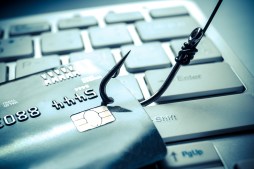Strategies to Grow Your Emergency Fund: Tips for Long-Term Business Resilience
In today’s unpredictable business climate, having a robust emergency fund is crucial for long-term success. An emergency fund acts as a financial cushion that can help your business weather unexpected storms like economic downturns, equipment failures, or sudden changes in market demand. In this article, we will explore effective strategies to build and maintain an emergency fund that ensures your business remains resilient and adaptable.
Understanding the Importance of an Emergency Fund
An emergency fund serves as a safety net for your business. It can provide immediate cash flow when unforeseen expenses arise without needing to rely on credit or loans. This financial buffer helps you avoid disruption in operations and allows for better decision-making during challenging times. By prioritizing an emergency fund, you’re not just protecting your business; you’re also ensuring its growth potential.

Setting Clear Financial Goals
Before you start building your emergency fund, it’s essential to establish clear financial goals. Assess how much money would be necessary to cover at least three to six months of operating expenses. This amount will serve as the foundation of your emergency fund. Knowing this target helps keep you focused and motivated as you work towards saving that crucial amount.
Choosing the Right Savings Account
Selecting the right savings account is vital when building an emergency fund. Look for high-yield savings accounts that offer competitive interest rates without monthly fees or withdrawal penalties. These accounts allow your money to grow while still being easily accessible in case of emergencies—striking the perfect balance between liquidity and earning potential.
Automating Your Savings
One of the most effective ways to build your emergency fund is through automation. Set up automatic transfers from your primary business account into your dedicated savings account each month or each time revenue hits a certain threshold. By treating these transfers like any other recurring expense, you’ll ensure consistent contributions without having to think about it—a simple yet powerful strategy.
Regularly Reviewing and Adjusting Your Fund
Once you’ve established an emergency fund, it’s important to regularly review its status and adjust as necessary based on changes in operating costs or business conditions. Make it a habit to evaluate this aspect at least once per quarter; reassess both how much money is needed in the fund and how much you are currently contributing towards it.
In conclusion, building and maintaining an emergency fund requires strategic planning but pays off significantly by providing stability during uncertain times. By understanding its importance, setting clear goals, choosing appropriate savings methods, automating contributions, and reviewing regularly, you’ll be well on your way to achieving long-term resilience for your business.
This text was generated using a large language model, and select text has been reviewed and moderated for purposes such as readability.











